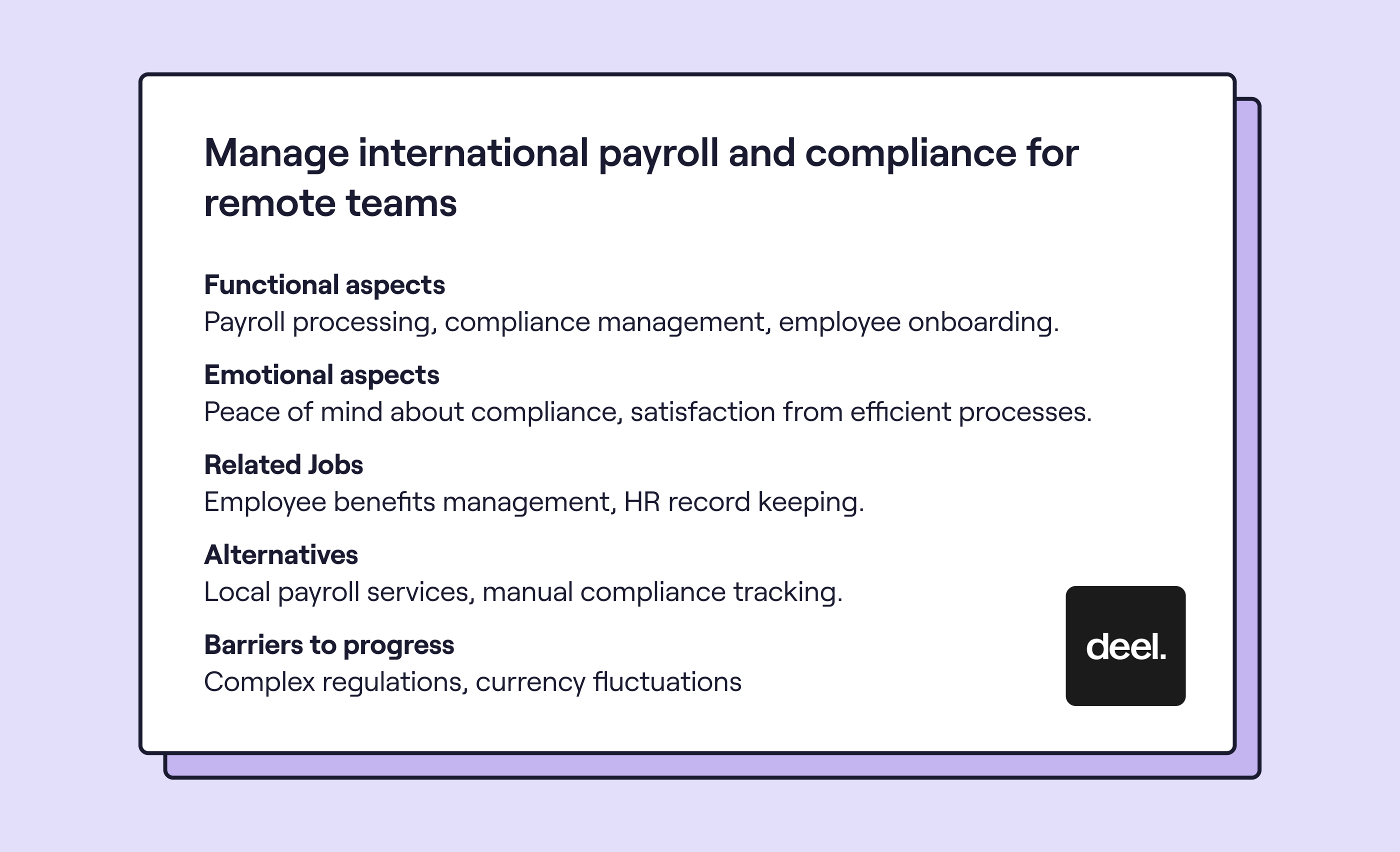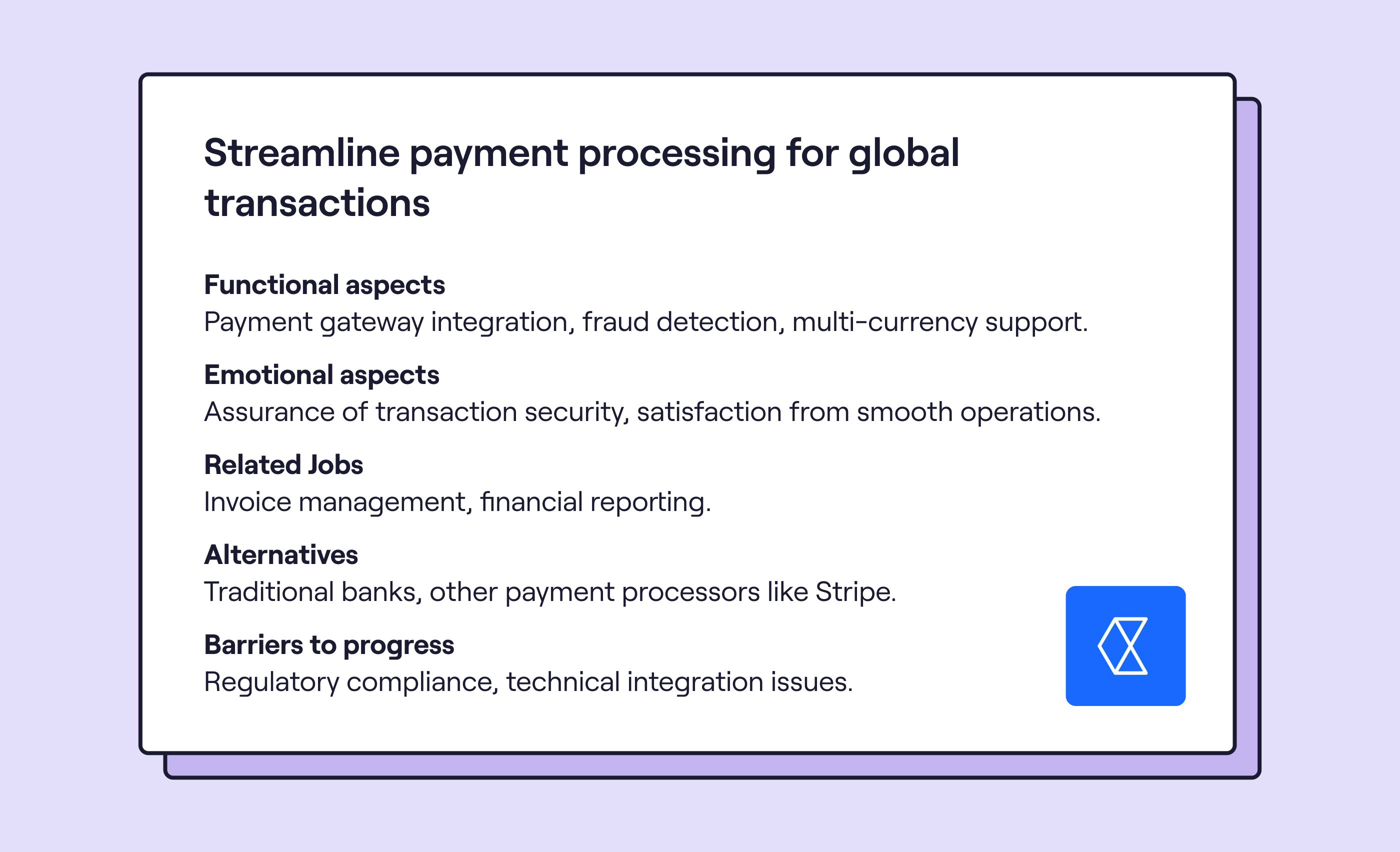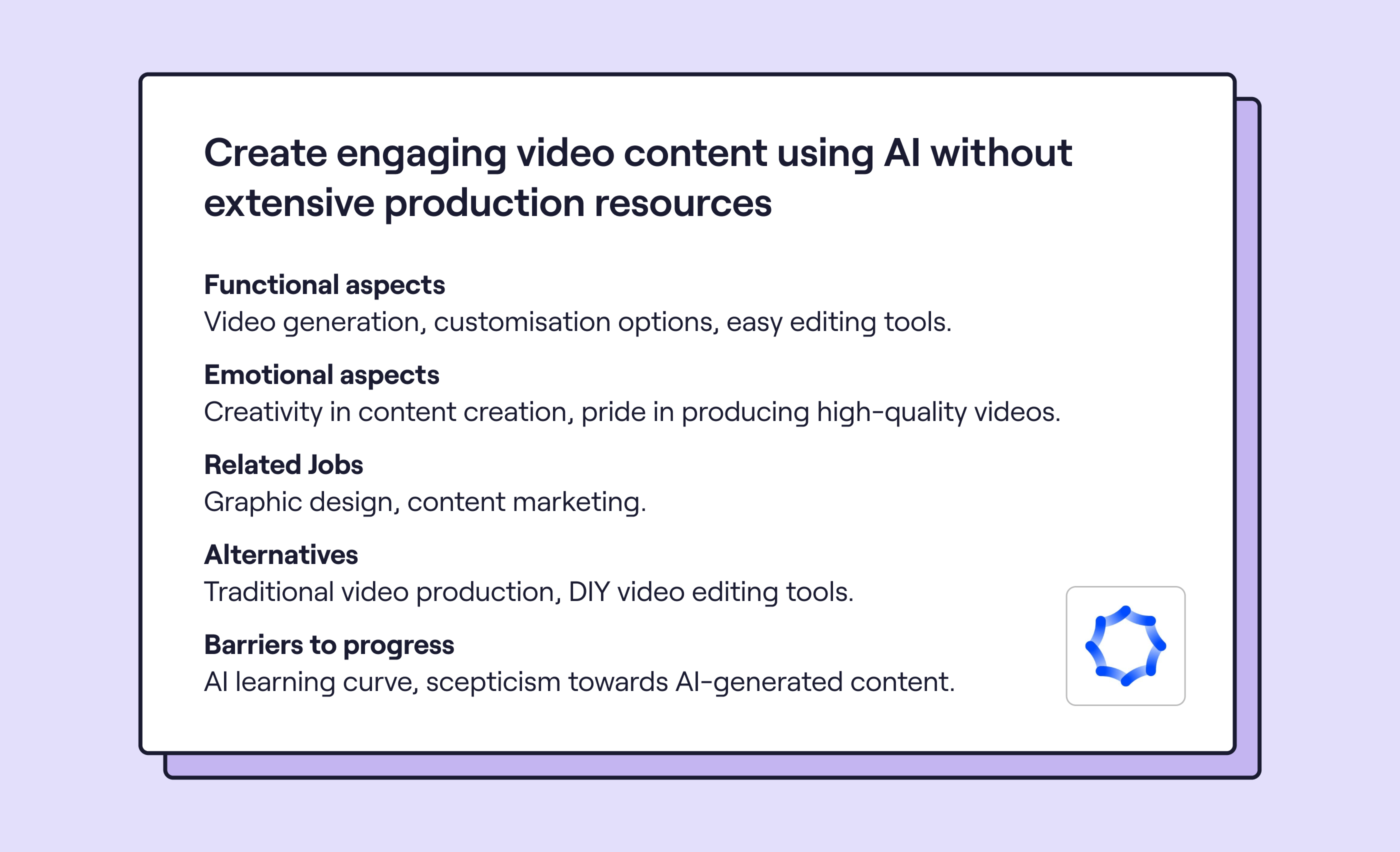How to use Jobs-to-be-Done in B2B
Simply put, Jobs to be Done (JTBD) is a framework for defining, categorising, and capturing customers’ needs.
Popularised by thought leaders like Tony Ulwick and Clay Christensen, the theory that underpins JTBD is that customers don’t buy products or services for their features; they ‘hire’ them to get a ‘job’ done.
A ‘job’ in the context of JTDB is an outcome a customer is trying to achieve – like owning their first home, visiting a new city, or ensuring they comply with tax regulations. It could be a task, goal, problem to be solved, or a form of progress someone is trying to make. Regardless of the job type, for the sake of JTBD, it should be relatively stable over time and solution-agnostic.
“LinkedIn can help us to expand our professional connections, market our services, or even get a job. We were doing these things before we had LinkedIn. And we’re likely to be doing them in future, even if LinkedIn is no longer relevant." – AIM Institute
By applying this lens to innovation and investing in gaining a deeper understanding of customers’ motivations, organisations can:
- Develop products and services that better meet customer’s needs
- Market to customers more effectively
- Broaden their market definition
- Align activities across departments
- Disrupt or protect against being disrupted
At Hyperact, we often use Jobs to be Done with our clients to help them reconnect with their customers' fundamental needs and uncover opportunities for developing more impactful solutions, moving beyond iterative and incremental improvements.
But the problem, and the purpose of this article, is that many of the reference points on JTBD are B2C and marketing-focused. If you’ve read up on JTBD, you’ve likely come across Clay Christensen’s famous milkshake example – which is both a little nauseating and very little help to a Product Manager trying to figure out how to reduce churn on their distributed energy resource management platform.
This article provides a primer on Jobs to be Done, practical advice on overcoming the common challenges of using JTBD in B2B, and some relevant examples.
👩🏫 A primer on Jobs to be Done
What is Jobs to be Done?
Jobs to be Done (JTBD) is a framework for defining, categorising, and capturing customers’ needs. It is underpinned by the theory that customers hire products and services to get ‘jobs’ done.
Who invented Jobs to be Done?
Tony Ulwick first created the concept of JTBD in 1990 and later introduced it to Clay Christensen, who coined the term ‘Jobs to be Done’ in The Innovator’s Solution.
What are the benefits of Jobs to be Done?
Using Jobs to be Done, organisations can:
- Develop products and services that better meet customers' needs: By understanding the specific jobs customers are trying to accomplish, companies can tailor their offerings to provide more value.
- Market to customers more effectively: Targeted messaging that speaks directly to the customers' jobs will resonate more and drive engagement.
- Broaden market definitions: Identifying the various jobs customers need help with can reveal new market opportunities beyond current product lines and offerings.
- Align activities across departments: A shared focus on the customers' jobs ensures that all departments work towards the same goals, enhancing efficiency and coherence.
- Disrupt or protect against being disrupted: By anticipating and addressing the evolving jobs customers face, companies can innovate proactively and stay ahead of competitors.
What are the different theories on Jobs to be Done?
This is often not acknowledged and can be confusing when learning about JTBD. There are two schools of thought about JTBD: Jobs-as-Progress, where a job is defined as the progress someone is trying to make, like getting their team to collaborate more effectively, and Jobs-as-Activities, where a job is defined as a specific activity that needs to be accomplished, like generating monthly performance reports.
Our take is that they’re not mutually exclusive. Used in isolation, Jobs-as-Progress can be too broad and high-level, which can be unhelpful in developing viable solutions, and Jobs-as-Activities can be too narrow, stifling the potential for innovation. You get the most benefit by using them together and framing each within the context of the other.
When should I use Jobs to be Done?
Ideally, at the start of the product development process (“Fall in love with the problem, not the solution”). However, in reality, most people reading this will likely be at the helm of an existing product or service. If you don’t have a great handle on the underlying jobs your customers hire your product for, then doing the research to understand them can transform how you think about your product and roadmap and highlight opportunities for more impactful improvements and adjacent product lines.
How do I apply Jobs to be Done?
1. Chose your scope
If you have an existing product or service, your scope should include prospective, existing, and former customers. Multiple people may be involved in the buying process. For example, if your product is an online tool that helps children learn how to code, then you may have numerous customers and users, i.e., children, parents, and schools.
If you’re exploring a new opportunity, start with a problem you’re interested in, know others have, or that fits within your organisation's vision/mission.
The founders of DoorDash started their company without an idea. After interviewing 200 small business owners all over the Bay Area, they kept hearing the same thing over and over again: Deliveries are painful.
2. Do the research
Once you’ve chosen the problem space to focus on, you need to identify all the different jobs customers have within that space through high-quality, qualitative user research, such as customer interviews.
There are a number of great guides on conducting JTBD interviews out there, but to summarise some of the key principles that distinguish them from more typical user interviews:
- Focus on customers at a point of change – those considering hiring a new product or service or that just have.
- Use techniques like ‘Five whys’ to uncover their underlying motivations.
- Explore the customer’s ‘first thought’ – the moment when they discover that they need a new solution for their job.
- Probe their social and emotional motivations for seeking a new solution.
- Focus on real situations – ask them about where they were, who they were with, how they were feeling.
- Ask about their barriers to hiring a new solution.
- Understand what they perceive as their alternatives.
3. Categorise
At this point, you should have a long list of various Jobs from your customer interviews. You can now start categorising them into the following three buckets:
- Main jobs: The primary activity or progress the customer is trying to make.
- Related jobs: The additional functional tasks the customer seeks to complete before, during, or after the Main Job.
- Emotional jobs: How the customer wants to feel or be perceived when performing the Main Job.
4. Write your job statement
Finally, you can now start defining your JTBD using a standard format that makes it easier for people to understand:

E.g.
- Automate financial report generation at the end of each fiscal quarter.
- Enhance customer support response times during product launches.
- Build stronger client relationships to enhance retention and loyalty.
Now that the basics are covered, let's explore why JTDB can be trickier to understand in B2B contexts.
🖇️ How to use Jobs to be Done in B2B
In theory, using JTBD in a B2B context should be no different than in B2C. However, as well as the lack of resources around the subject, there are some more unique challenges in B2B:
1. Multi-level decision-making process
In B2B environments, purchasing decisions often involve multiple stakeholders with different roles, priorities, and motivations. The people using your product or service are often not the ones buying it, so it can be harder to identify which actors’ jobs you should focus on understanding.
To tackle this, as a B2B Product Manager / User Researcher / Designer, you should research and map out the different jobs of each stakeholder involved in buying and using your product or service. Yes, this takes time, but it’s crucial to optimise both customer acquisition and retention.
2. Getting time from stakeholders
In B2B settings, securing time from stakeholders, especially senior decision-makers, for user research can be challenging. These individuals often have packed schedules and may not see the immediate value in participating.
There are a couple of tactics to overcome this. One is not to be afraid to ask. You’ll be surprised how many customers are willing to have their opinions and experiences heard to help shape product development. Two is to work with sales and customer success teams, who will have relationships at different layers of the organisation to ask your questions or allow you to tag along to their calls.
3. Straying from business goals and objectives
The power of JTBD is in its ability to highlight opportunities to serve customers' jobs in new ways, often beyond your existing product lines. While this can be transformative for some organisations, some of these opportunities may simply be unfeasible to pursue or not in keeping with the organisation’s brand or strategy.
Having a solid understanding of your organisation’s vision and objectives and limiting the scope of enquiry around these will keep you focused on customer jobs that you can cater for. Unless, of course, you are given a more transformational mandate.
4. Less emotional engagement
B2C purchases often have a significant emotional component, which can be a powerful driver for JTBD analysis. In contrast, B2B purchases are generally more rational and logic-driven, focusing on factors like ROI, efficiency, and long-term benefits. This difference means that the emotional insights that often guide B2C JTBD analyses are less prevalent, making it harder to capture the nuanced motivations of B2B buyers.
While emotional drivers may be less overt, they still exist. Don’t shy away from asking about the pressures and expectations B2B buyers and users face, such as career advancement and risk avoidance.
🏢 Examples of Jobs to be Done in B2B
Hubspot

Deel

Checkout.com

Synthesia

Twilio

Wrapping things up
The Jobs-to-be-Done framework is a powerful tool for understanding customers' needs and motivations. It centres around the concept that customers "hire" products and services to get specific ‘jobs’ done. By applying this framework, organisations can develop better products, improve marketing effectiveness, identify new market opportunities, align activities across departments, and proactively innovate to stay ahead of competitors.
While the framework was initially focused on B2C and marketing, it can also be applied to B2B contexts with some adjustments. Understanding the different theories of JTBD and when and how to apply them can significantly benefit product development and roadmap planning, enabling businesses to uncover opportunities for impactful improvements and new product lines.

